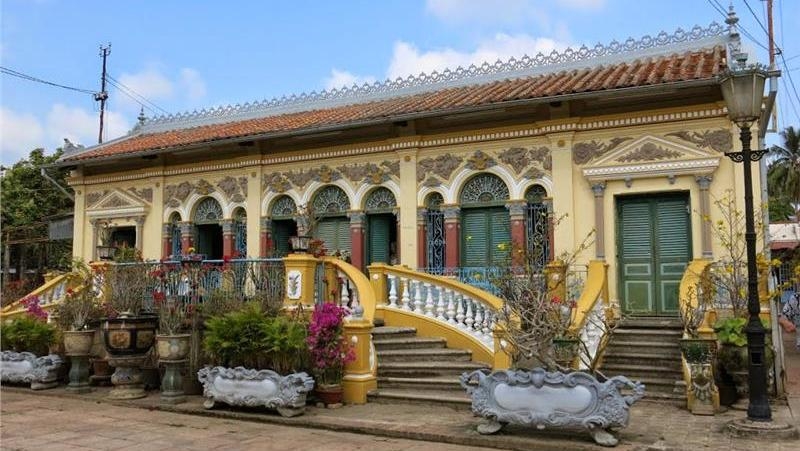Located on Bui Huu Nghia Street, Can Tho City, the Binh Thuy ancient house is a rare ancient constructions in Viet Nam which has been well preserved and kept intact, allowing visitors to explore the culture and the life of Southwest region’s people in the 20th century.

The house, imbued with French architectural style, was recognised as a national heritage site. It was built in 1870 by the Duong family on an area of nearly 6,000m² and is currently managed by Duong Minh Hien, the family’s sixth generation descendant.
Going through the entrance gate, tourists approach a large courtyard paved with red Chinese tiles. Inside the courtyard are various types of orchids and ornamental plants.
A fifth generation member of the Duong family is an orchid lover, who put much effort into collecting many valuable and rare types of orchids. He also founded groups of orchid lovers to share their passion for the flower. That is why the house is also named Binh Thuy orchid garden.
There are four stairs to get into the house: two of them are bow-shaped and lead into main compartments, while the two others lead to the two wings of the house. Stopping at the stairs, visitors can have a closer look at the sophisticated decorative encaustic patterns of the domes and doors.
The very first feeling embracing visitors to the house is a cool and fresh welcoming atmosphere. Although there are no fans or air conditioners inside, the heat seem to be left behind when one enters the house. This is because the construction has many doors and windows and its base is about one metre higher than the land surface, making the house more spacious and comfortable.
According to Ngo Ngoc Lien, a daughter-in-law of the Duong family, when the house was constructed, the owner had requested to fill over 10 centimetres of salt under its foundation as a way of keeping the house cool and dry.
The floor is paved with imported French tiles featuring black and red roses. The house is special because although it was designed with a French style, its decoration and arrangement are typically Vietnamese. The most solemn place at the centre of the house put a red lacquer ancestors’ altar trimmed with gold. Beds and cabinets were spectacularly carved with decorations featuring the daily life of people at that time.
The Binh Thuy ancient house is also home to valuable antiques which have been handed down generations to generations, including six rows of total 24 black ironwood pillars, Chinese table and chair set with marble-made surface, a French-style salon dating to Louis XV, and a chandelier dating back to the 18th century.
Thanks to its unique space which is blended between modernity, ancient and luxury, the house has been selected for the filming of many successful cinematic works, such as ‘Nguoi Dep Tay Do’ (A Beauty of Tay Do), Nhung Neo Duong Phu Sa (Alluvial Ways), and Nguoi Tinh (The Lover) – a famous French drama film produced by Claude Berri and directed by Jean-Jacques Annaud. Many visitors come to the house because they have watched the films and want to explore the corners cameramen selected for the filming.
Although Can Tho is home to dozens of ancient houses, Binh Thuy still stands out as a symbol of the harmonious mixture of Western and Eastern architecture. The house is a unmissable tourist attraction for thousands of visitors to Can Tho every year.